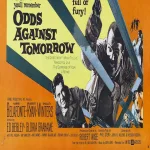The Hays Code: Censorship and Cinema’s Moral Dilemma

Operation Paperclip: The Controversial Recruitment of Nazi Scientists Post-WWII
August 2, 2023
Revolutionizing Cinema: A Deep Dive into “Odds Against Tomorrow”
August 4, 2023The Hays Code, officially named the Motion Picture Production Code, was a set of industry guidelines that dictated the content of films produced in the United States from the early 1930s to the late 1960s. Named after Will H. Hays, who was the president of the Motion Picture Producers and Distributors of America (MPPDA), the code was established in response to growing concerns about the influence of movies on societal morals and values.
The Hays Code aimed to maintain a certain level of morality and decency in films, and it covered a wide range of subjects, including violence, sex, crime, religion, and politics. Films were required to uphold a positive image of America and avoid any content that could be seen as promoting immorality, criminal behavior, or subversive ideologies.
Some of the key restrictions imposed by the Hays Code included:
- Depiction of Crime and Justice: Criminal behavior could not be depicted in a positive or sympathetic light. Criminals had to face consequences for their actions, and law enforcement was portrayed as virtuous.
- Sex and Morality: Sexual content and nudity were strictly limited. Adultery, homosexuality, and any behavior deemed immoral were prohibited.
- Religion: Religious beliefs and institutions were to be treated with respect and not criticized.
- Language: Vulgar language and profanity were not allowed.
- Drug Use: The use of illegal drugs was forbidden, except when shown in a negative context.
- Violence: Excessive violence and gore were to be minimized.
- Politics: Political and social issues were to be handled with caution, avoiding any potential controversy.
- Race Relations: Depictions of racial or ethnic stereotypes were discouraged.
The Hays Code had a profound impact on the content of films during its enforcement. Filmmakers had to find creative ways to convey certain themes and subjects while adhering to the code’s guidelines. Many filmmakers found ways to subtly address social issues, while others embraced the limitations and used them to enhance their storytelling.
However, by the late 1950s and early 1960s, social attitudes were changing, and the code was increasingly seen as outdated and restrictive. Films from other countries with more liberal standards were gaining popularity, and filmmakers and audiences alike were clamoring for more realistic and challenging narratives.
“Odds Against Tomorrow” (1959), directed by Robert Wise, is often cited as a film that challenged the Hays Code. The movie tackled issues of racism and social tension head-on, pushing the boundaries of what was considered acceptable at the time. Its unflinching exploration of these themes paved the way for a shift in Hollywood’s approach to storytelling.
The decline of the Hays Code in the 1960s marked a significant shift in the film industry. The rise of auteur directors and the emergence of the New Hollywood era brought about a new wave of creativity and experimentation in cinema, ultimately leading to the end of the code and the birth of a more mature and diverse film landscape.




